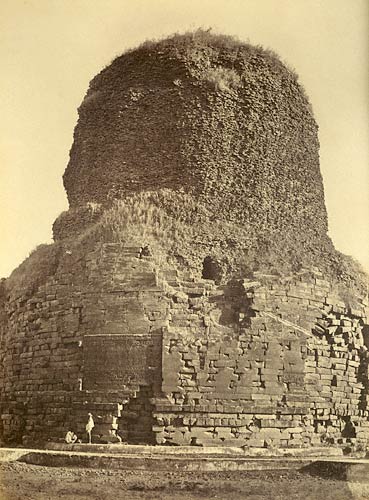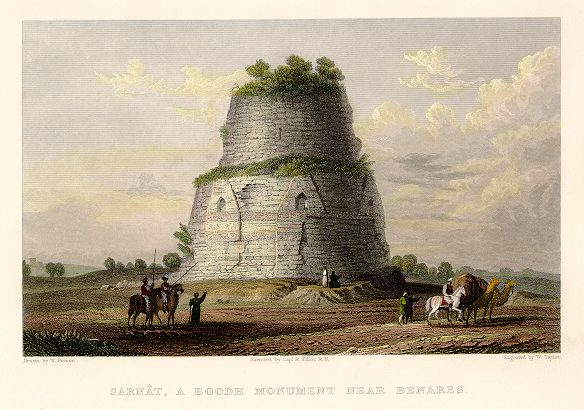Rhys Blakely in Delhi
Free Online FOOD for MIND & HUNGER - DO GOOD 😊 PURIFY MIND.To live like free birds 🐦 🦢 🦅 grow fruits 🍍 🍊 🥑 🥭 🍇 🍌 🍎 🍉 🍒 🍑 🥝 vegetables 🥦 🥕 🥗 🥬 🥔 🍆 🥜 🎃 🫑 🍅🍜 🧅 🍄 🍝 🥗 🥒 🌽 🍏 🫑 🌳 🍓 🍊 🥥 🌵 🍈 🌰 🇧🇧 🫐 🍅 🍐 🫒Plants 🌱in pots 🪴 along with Meditative Mindful Swimming 🏊♂️ to Attain NIBBĀNA the Eternal Bliss.
Kushinara NIBBĀNA Bhumi Pagoda White Home, Puniya Bhumi Bengaluru, Prabuddha Bharat International.
06/07/08

THE BUDDHA
AND HIS DHAMMA
by Dr. B. R. Ambedkar
A question is always asked to me: how I happened to take such a high degree of education. Another question is being asked: why I am inclined towards Buddhism. Thesequestions are asked because I was born in a community known in India as the”Untouchables.(Original Inhabitants of Jambudvipa, that is the Great Prabuddha Bharath)” This preface is not the place for answering the first question. But this preface may be the place for answering the second question.
The direct answer to this question is that I regard the Buddha’s Dhamma to be the best. No religion can be compared to it. If a modern man who knows science must have a religion, the only religion he can have is the Religion of the Buddha. This conviction has grown in me after thirty-five years of close study of all religions.
How I was led to study Buddhism is another story. It may be interesting for the reader to know. This is how it happened.
My father was a military officer, but at the same time a very religious person. He brought me up under a strict discipline. From my early age I found certain contradictions in my father’s religious way of life. He was a Kabirpanthi, though his father was Ramanandi. As such, he did not believe in Murti Puja (Idol Worship), and yet he performed Ganapati Puja–of course for our sake, but I did not like it. He read the books of his Panth. At the same time, he compelled me and my elder brother to read every day before going to bed a portion of the Mahabharata and Ramayana to my sisters and other persons who assembled at my father’s house to hear the Katha. This went on for a long number of years.
The year I passed the English Fourth Standard Examination, my community people wanted to celebrate the occasion by holding a public meeting to congratulate me. Compared to the state of education in other communities, this was hardly an occasion for celebration. But it was felt by the organisers that I was the first boy in my community to reach this stage; they thought that I had reached a great height. They went to my father to ask for his permission. My father flatly refused, saying that such a thing would inflate the boy’s head; after all, he has only passed an examination and done nothing more. Those who wanted to celebrate the event were greatly disappointed. They, however, did not give way. They went to Dada Keluskar, a personal friend of my father, and asked him to intervene. He agreed. After a little argumentation, my father yielded, and the meeting was held. Dada Keluskar presided. He was a literary person of his time. At the end of his address he gave me as a gift a copy of his book on the life of the Buddha, which he had written for the Baroda Sayajirao Oriental Series. I read the book with great interest, and was greatly impressed and moved by it.
I began to ask why my father did not introduce us to the Buddhist literature. After this, I was determined to ask my father this question. One day I did. I asked my father why he insisted upon our reading the Mahabharata and Ramayana, which recounted the greatness of the Brahmins and the Kshatriyas and repeated the stories of the degradation of the Shudras and the Untouchables (Original Inhabitants of Jambudvipa, that is the Great Prabuddha Bharath). My father did not like the question. He merely said, “You must not ask such silly questions. You are only boys; you must do as you are told.” My father was a Roman Patriarch, and exercised most extensive Patria Pretestas over his children. I alone could take a little liberty with him, and that was because my mother had died in my childhood, leaving me to the care of my auntie.
So after some time, I asked again the same question. This time my father had evidently prepared himself for a reply. He said, “The reason why I ask you to read the Mahabharata and Ramayana is this: we belong to the Untouchables, and you are likely to develop an inferiority complex, which is natural. The value of the Mahabharata and Ramayana lies in removing this inferiority complex. See Drona and Karna–they were small men, but to what heights they rose! Look at Valmiki–he was a Koli, but he became the author of the Ramayana. It is for removing this inferiority complex that I ask you to read the Mahabharata and Ramayana.”
I could see that there was some force in my father’s argument. But I was not satisfied. I told my father that I did not like any of the figures in [the] Mahabharata. I said, “I do not like Bhishma and Drona, nor
This is how I turned to the Buddha, with the help of the book given to me by Dada Keluskar. It was not with an empty mind that I went to the Buddha at that early age. I had a background, and in reading the Buddhist Lore I could always compare and contrast. This is the origin of my interest in the Buddha and His Dhamma.
The urge to write this book has a different origin. In 1951 the Editor of the Mahabodhi Society’s Journal of Calcutta asked me to write an article for the Vaishak Number. In that article I argued that the Buddha’s Religion was the only religion which a society awakened by science could accept, and without which it would perish. I also pointed out that for the modern world Buddhism was the only religion which it must have to save itself. That Buddhism makes [a] slow advance is due to the fact that its literature is so vast that no one can read the whole of it. That it has no such thing as a bible, as the Christians have, is its greatest handicap. On the publication of this article, I received many calls, written and oral, to write such a book. It is in response to these calls that I have undertaken the task.
To disarm all criticism I would like to make it clear that I claim no originality for the book. It is a compilation and assembly plant. The material has been gathered from various books. I would particularly like to mention Ashvaghosha’s Buddhavita [=Buddhacharita], whose poetry no one can excel. In the narrative of certain events I have even borrowed his language.
The only originality that I can claim in is the order of presentation of the topics, in which I have tried to introduce simplicity and clarity. There are certain matters which give headache[s] to the student of Buddhism. I have dealt with them in the Introduction.
It remains for me to express my gratitude to those who have been helpful to me. I am very grateful to Mr. Nanak Chand Rattua of Village Sakrulli and Mr. Parkash Chand of Village Nangal Khurd in the district of Hoshiarpur (
When I took up the task of composing the book I was ill, and [I] am still ill. During these five years there were many ups and downs in my health. At some stages my condition had become so critical that doctors talked of me as a dying flame. The successful rekindling of this dying flame is due to the medical skill of my wife and Dr. Malvankar. They alone have helped me to complete the work. I am also thankful to Mr. M. B. Chitnis, who took [a] special interest in correcting [the] proof and to go [=in going] through the whole book.
I may mention that this is one of the three books which will form a set for the proper understanding of Buddhism. The other books are: (i) Buddha and Karl Marx; and (ii) Revolution and Counter-Revolution in Ancient
B. R. Ambedkar
26
6-4-56
Below is an excerpt from Dr. B.R. Ambedkar’s writing called “Buddha or Karl Marx”:
I THE CREED OF THE BUDDHA
The Buddha is generally associated with the doctrine of Ahimsa. That is taken to be the be-all and end-all of his teachings. Hardly any one knows that what the Buddha taught is something very vast: far beyond Ahimsa. It is therefore necessary to set out in detail his tenets. I enumerate them below as I have understood them from my reading of the Tripitaka :
1. Religion is necessary for a free Society.
2. Not every Religion is worth having.
3. Religion must relate to facts of life and not to theories and speculations about God, or Soul or Heaven or Earth.
4. It is wrong to make God the centre of Religion.
5. It is wrong to make salvation of the soul as the centre of Religion.
6. It is wrong to make animal sacrifices to be the centre of religion.
7. Real Religion lives in the heart of man and not in the Shastras.
8. Man and morality must be the centre of religion. If not, Religion is a cruel superstition.
9. It is not enough for Morality to be the ideal of life. Since there is no God it must become the Jaw of life.
10. The function of Religion is to reconstruct the world and to make it happy and not to explain its origin or its end.
11. That the unhappiness in the world is due to conflict of interest and the only way to solve it is to follow the Ashtanga Marga.
12. That private ownership of property brings power to one class and sorrow to another.
13. That it is necessary for the good of Society that this sorrow be removed by removing its cause.
14. All human beings are equal.
15. Worth and not birth is the measure of man.
16. What is important is high ideals and not noble birth.
17. Maitri or fellowship towards all must never be abandoned. One owes it even to one’s enemy.
18. Every one has a right to learn. Learning is as necessary for man to live as food is.
19. Learning without character is dangerous.
20. Nothing is infallible. Nothing is binding forever. Every thing is subject to inquiry and examination. 21. Nothing is final.
22. Every thing is subject to the law of causation.
23. Nothing is permanent or sanatan. Every thing is subject to change. Being is always becoming.
24. War is wrong unless it is for truth and justice.
25. The victor has duties towards the vanquished. This is the creed of the Buddha in a summary form. How ancient hut how fresh! How wide and how deep are his teachings!
International Multipurpose Co-operative Society of Original Inhabitants of Jambudvipa that is the Great Prabuddha Bharath (IMCSOIJGPB) will publish 1000 copies of The Buddha and His Dhamma written By Baba Saheb Dr. B.R. Ambedkar in small parts as leaflets. All the members of the society has the right to do the same preferably in different languages.
http://business.timesonline.co.uk/tol/business/markets/india/article4082271.ece
From
June 7, 2008
The Children’s Development Bank tips the balance in favour of street children
An innovative international scheme is giving the young traders of Asia a helping hand in their daily fight for survival

